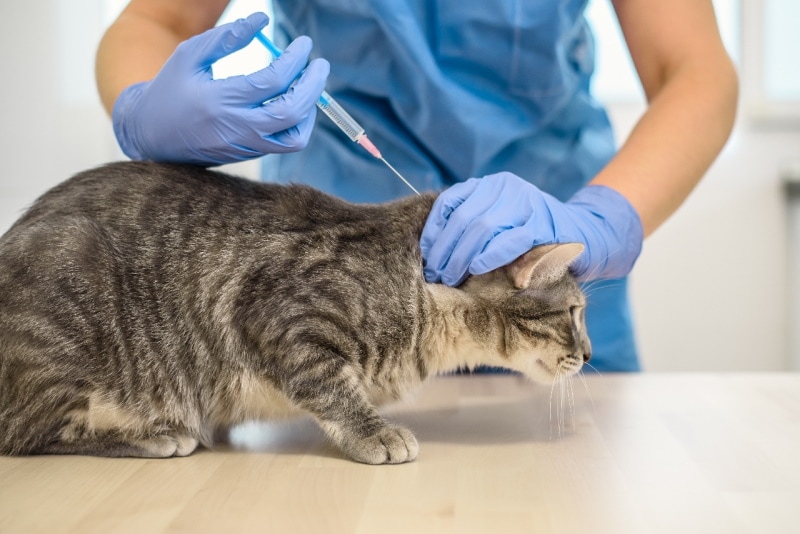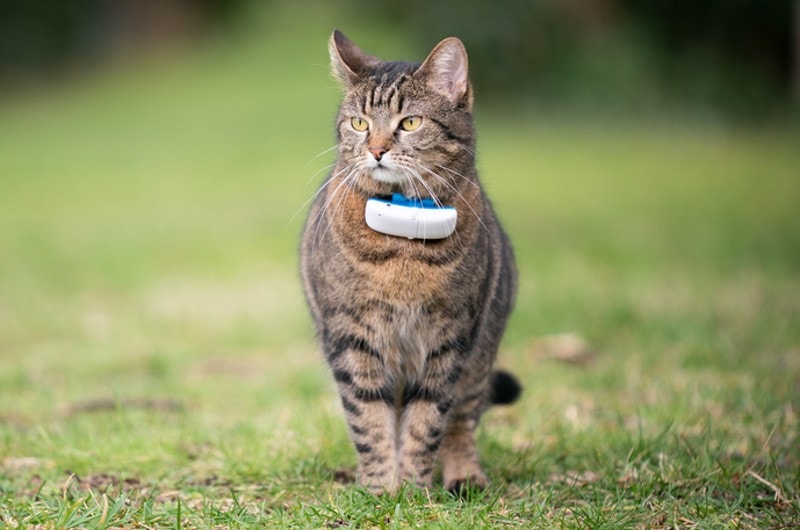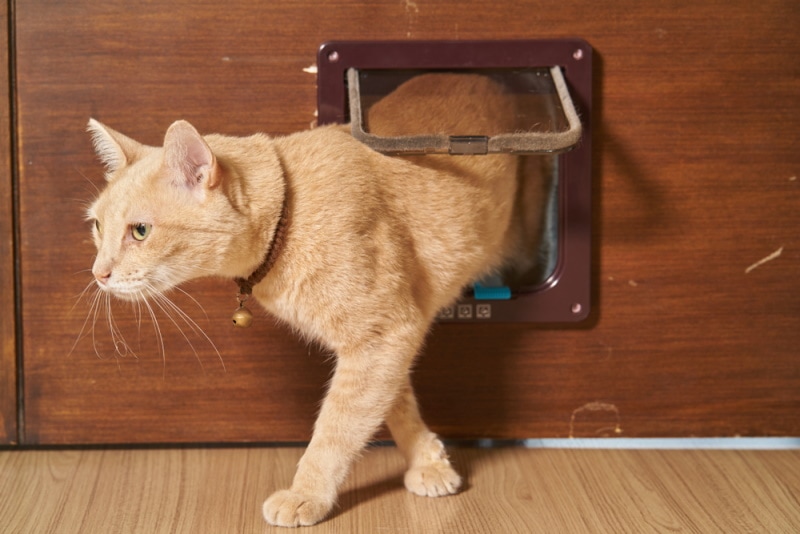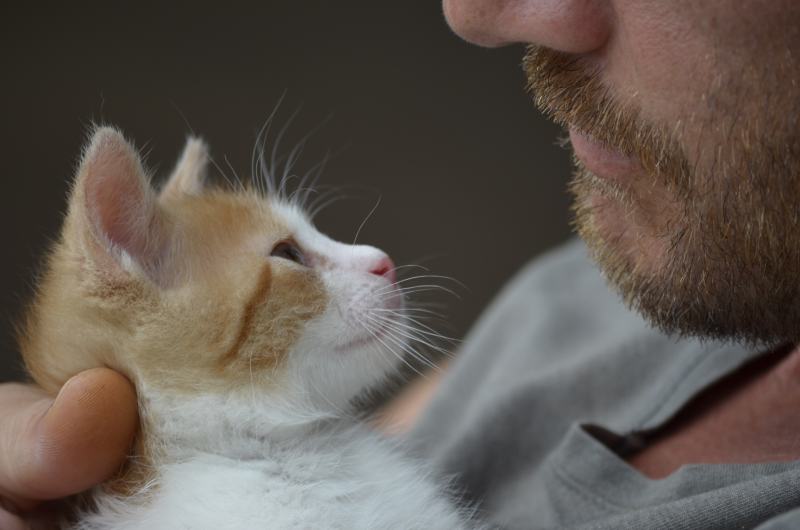Will My Cat Come Back If I Let Them Outside? Expert Tips & FAQ
Updated on

The debate about whether you should let your cat outside is a tough one. The idea of letting your cat run loose outside can be quite stressful — you want your cat to stay safe! There’s also the fear that your cat might not be able to find their way home.
Will your cat come home if you let them outside? If you prepare your cat the right way and go through a transition period, your cat will likely return home.
In this article, we go over the methods that you can use to slowly transition your cat into an outdoor cat. We also review the risks and the benefits of letting your cat go outside, so you can make an informed decision.
Navigate our tips by clicking on the topic you would like to review first:
Things to Know Before Letting Your Cat Outside
There are several considerations that you should make before letting your cat outside.
1. Breed
Some breeds of cats should never go outside. For example, the Sphynx is a hairless breed that needs protection from the weather, both hot and cold. In fact, they need sunscreen if they will be in the sun for a while.
Breeds like the Devon Rex and Cornish Rex only have one layer of thin hair. Most cats have three layers, so like the Sphynx, these cats should be indoors only.
There are also breeds that will have difficulty physically defending themselves, such as Munchkins. They have short legs and will have trouble escaping from a threat. If you have a rescue cat that was declawed, they have no way to protect themselves. If you have an eye-catching or rare breed, they are more likely to get snatched by someone, so you might want to keep these unique cats indoors too.

2. Temperament
Some cats aren’t meant to spend time outside because of their temperament. For example, some cats are incredibly timid and suffer from anxiety, which isn’t ideal when spending time outdoors.
Ragdolls won’t do well outside, for example, and they are also a breed that is a common target for being stolen. The same can be said for Persians, which are gentle and sedate lap cats.
Not every cat will excel outdoors, so you should trust your instincts and how well you know your cat.
3. Vaccinations and Surgery
If you think that your cat is a good candidate for going outside, you must ensure that they have been spayed or neutered and are up to date on their vaccinations. A cat that hasn’t been fixed might run away or come home pregnant.
Also, without vaccines, your cat can contract serious health conditions. Rabies 1, feline herpesvirus 1 2, feline calicivirus 3, and feline panleukopenia virus4 are all diseases that are transmissible to other cats and can be deadly.

How Do You Let Your Cat Outside for the First Time?
If you’re confident that your cat will do fine outside, there are a few steps that you should take to prepare for their venture into the great outdoors.
1. Take Their Age Into Account
The age of a cat will impact their readiness to go outside. Kittens shouldn’t go out until they are at least 4 months old. By this age, they will have had all their vaccinations and been spayed or neutered. They should know their home well enough to find it again.
If you’ve just brought home an adopted adult cat, you should give them about 4 to 6 weeks to adjust to their new home before you consider letting them out. This will make it easier for them to find their way home.
2. Give Them I.D.
When you feel that everything is ready for the next step, you should first ensure that your cat has identification. Having your outdoor cat microchipped is essential. This way, if they get lost, it will be easier for vets and rescues to identify them and have them returned to you. If you move, remember to update the microchip’s information online.
You should also have a collar with an ID tag on your cat. Make sure the collar is a breakaway, so your cat will avoid injury by not getting it snagged on something. The ID tag should have your phone number so someone can get in contact with you.
You can put a GPS tracker on the collar so you can know exactly where your cat is, and you should also add a bell to your cat’s collar to help save birds and other small mammals.
Another advantage of putting a collar on your cat is that it will let people who see your cat know that they have a home and aren’t a stray.

3. Create a Safe Outdoor Space
Having a designated space for your cat outside is a great way to encourage them to stay close to home and keep them safe. Cover any ponds that you may have so they don’t fall in or drink the water, which might contain bacteria. Only use environmentally safe weed or pest killers that are not toxic to cats.
Other things that are ideal for cats include:
- Enclosed spaces where they can hide
- High areas that they climb
- Cat-friendly plants (remove any toxic plants)
- A scratching surface, like a tree
- Open spaces where they can stretch out and enjoy the sun
- Freshwater
- Catnip
4. Install a Cat Flap
Installing a cat flap in your door leading to the backyard will allow your cat to come and go as much as they want. There are also microchip cat flaps that will lock out any animal trying to get through, except for your own cat.
Some cat flaps are also run by a timer to stop your cat from going outside at night or any other time that you prefer to keep them inside.

5. Ensure That Your Cat Will Come When Called
Ensure that your cat responds to their name, and then using treats, teach them to come when you call them. While inside, shake the treat bag and call their name, and when they respond, give them a treat and praise.
Then, create distance between the two of you inside your home, and try it again. If they respond, give them a treat again. This will help give you peace of mind that they are more likely to come home when outside, as you can try calling them and shaking the treat bag. You should see your cat bounding home!
6. Accompany Them Outside
Now that everything is prepared, you’re ready to let them out.
The first several times that you let your cat out, go outside with them. If they are hesitant, go outside yourself and hold the door open until they venture out. Sit outside with your treat bag and watch them explore the space.
Try calling them back with the treats if they start leaving the yard, which can help instill the idea that they shouldn’t go too far away. They should only be allowed outside for about 30 minutes to start.
Taking your cat for a walk can be rewarding for both of you, but you will need a great harness and leash. Our Hepper Cat Harness & Leash Set is a secure, sturdy option made from lightweight, machine-washable velvet and airy mesh. With multiple adjustment points, reinforced stitching, and reflective stripes, this harness will keep your cat comfortable and safe, and the premium climbing rope leash will make walking a breeze.
- Escape Proof - Cat leashes and harnesses for walking aren't all equally secure. Our double aluminium...
- Superior Comfort - Our cat harnesses are lightweight, made with premium velvet fabric, breathable...
7. Let Your Cat Out Alone
Once your cat seems comfortable exploring outside, you can start letting them out on their own. If your cat is nowhere to be seen, try calling them and shaking your treats; chances are, you’ll soon see them trotting home.
If they vanish for a while, just give them time; they can find their way back to you. If you have a GPS tracker on their collar, you can keep track of where they are at all times.
What Are the Benefits of Letting Your Cat Outside?
Now that you’ve seen the best ways to start letting your cat out, let’s go over the benefits of doing so. Keep in mind that this depends on whether your cat can handle being outside.
1. Mental and Physical Stimulation
The great outdoors is full of scents, sounds, and sights that your cat will enjoy exploring. If you’re unable to play consistently with your cat every day, being outside will be a great outlet for them mentally and physically.
When bored, cats may resort to destructive behavior, such as knocking things over, scratching furniture, and eliminating outside the litter box, as well as potentially aggressive behavior.
2. Their Own Space
Being outside will give your cat their own space. This is crucial if something stressful is occurring at home, such as guests visiting or renovations happening.
Being able to escape these stressors into their own space can give your cat the freedom to choose where to be. If you decide to not let your cat outside, be sure to have a safe place for your cat to escape inside when they’re stressed or afraid.
3. Natural Behavior
Being outside gives your cat the opportunity to do all the things that cats love to do. They can run, jump, stretch, climb, scratch, and explore to their heart’s content. They will also get more exercise, decreasing the risk of obesity.

What Are the Risks of Letting Your Cat Outside?
With the good comes the bad. The risks of letting your cat roam freely outside are substantial.
1. Cars
One of the most significant risks to outdoor cats is getting hit by a car. This risk is more substantial at night because cats are more difficult to see by drivers.
Young cats or cats still new to being outside are likelier to get hit by a car because they haven’t learned about roads or vehicles yet.
You should keep your cat inside at night, and if you live close to a busy road, consider setting up a secure area in your garden so they can’t wander onto the street.

2. Predators
Predators could be a considerable risk depending on where you live. Animals like coyotes and wandering dogs are known to snatch cats.
There’s also danger from above, like hawks, eagles, or owls. Maine Coons might not be a target for a bird of prey, but smaller cats will be. These are mostly nighttime dangers, but coyotes have been known to also attack pets during the day. There are also people who might kill a stray cat.
3. Cat Fights
Cat fights are usually territorial but can still cause injury, and they are more likely if your male cat is unneutered. Bite wounds are particularly nasty and can become abscessed if not treated.
4. Parasites and Disease
Outdoor cats are likelier to pick up diseases and parasites than indoor cats. This is why vaccinations are so necessary. But even protected by vaccines, outdoor cats can still pick up things like ticks, fleas, and worms.
5. Getting Lost
This is why microchipping and collars with ID tags are essential. But it’s still possible that your cat can get trapped somewhere or injured.

Should Cats Go Outside?
It’s your choice, but bear in mind that beyond your cat’s safety, you don’t want to be responsible for any damage that your cat might cause while prowling through the neighborhood.
Experts say that being outside is unnecessary for cats, and indoor cats can have fulfilling lives. This means ensuring that you have enough cat trees, toys, and other cat enrichment devices.
Try building or purchasing a catio so they can enjoy being outside safely. Use a harness and leash, and take them out for a leisurely stroll. If you’re worried about not being home enough, consider adopting a second cat so they won’t get lonely.
Indoor cats have an average lifespan of 15 to 17 years, while outdoor cats might only have a 2- to 5-year life expectancy.
Conclusion
Now you have the tools to help your indoor cat become an outdoor cat. As long as you’ve taken these steps and know that your cat is ready, they will be able to find their way home.
Just consider whether it’s worth it. Remember to have your cat spayed or neutered, and keep them updated on their vaccines.
Ultimately, try to keep your cat safe — after all, you want them to stay with you for as long as possible.
Featured Image Credit: Joanna22, Shutterstock











